Strong winds are never something any camper fantasizes about.
Yet the weather doesn’t always cooperate, and you should always be prepared.
If the weather forecast shows that your planned camping trip will be extremely windy, don’t fret.
Here are a couple of tips on how to secure a tent in high winds.
Securing Your Tent
First off, let’s go over the main things to do for how to secure a tent in high winds.
Stakes & Guylines
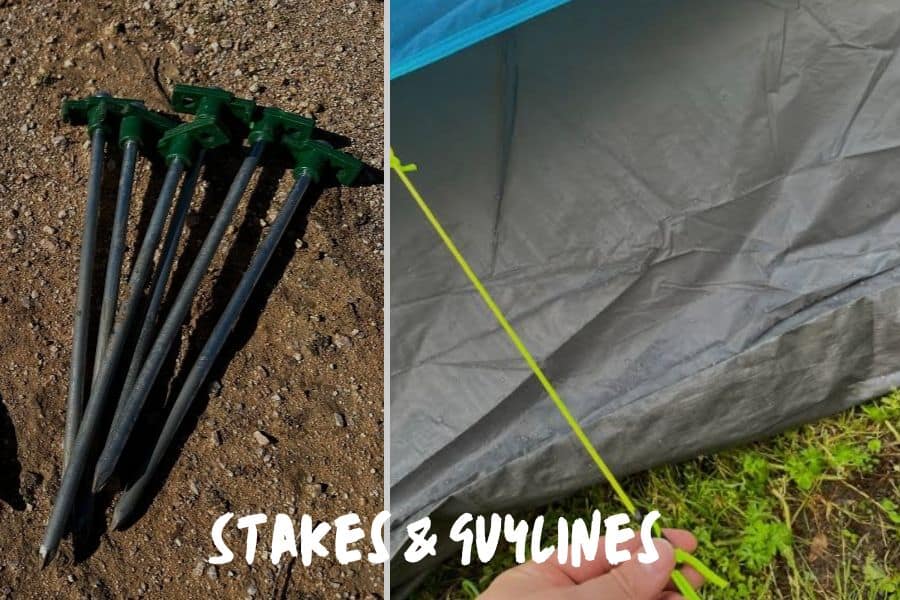
Right off the bat, the most important thing you can do to secure your tent in high winds is to make sure you have strong, terrain-appropriate stakes.
The stakes that originally came with your tent are generally not very sturdy and may not be great for different terrains and areas.
If you upgrade to heavy-duty stakes, they will keep your tent more secure.
Even more so if they are meant for the ground you’re camping on – like using U-shaped snow stakes while in heavy snow.
Also, you should always plan to use guylines. You can never be too safe, so it’s always a good idea to stabilize your tent with guylines.
But, when you’re camping in high winds, it’s a necessity. Guylines connect your tent body (or rain fly) to your stake.
Most of the time, there are loops extending from the bottom of the tent that are what you use to stake down your tent in average weather.
These ropes provide extra stability by making sure the tent body and frame is anchored to the ground as well as the groundsheet.
Read: Best tents for high winds
How To Stake Your Tent
Pull the tent out and grab the side that will be facing the wind. This is important to decide now, since this way the wind goes above and around you.
Stake the upwind side of the tent first. As soon as you do, put your backpack on the tent to keep it in place while you stake out the other sides.
If there are any stones nearby you could place them above each tent stake to make sure they don’t get pulled out of the ground.
Even though conventional camper wisdom will say you should push your stake in the ground at a 45° angle, it’s actually better to insert your stakes into the ground vertically.
While this might come as a surprise, a 90° angle creates the most contact between the stake and the ground.
When the stake has been fully inserted into the ground vertically, the guylines still pull at a 45° angle. Ultimately, this is the most secure position for stakes in high winds.
After you’ve pitched and staked your tent, secure the structure with guylines on all sides of the tent. They should be tight and anchored as close to the tent base as possible.
Orientation
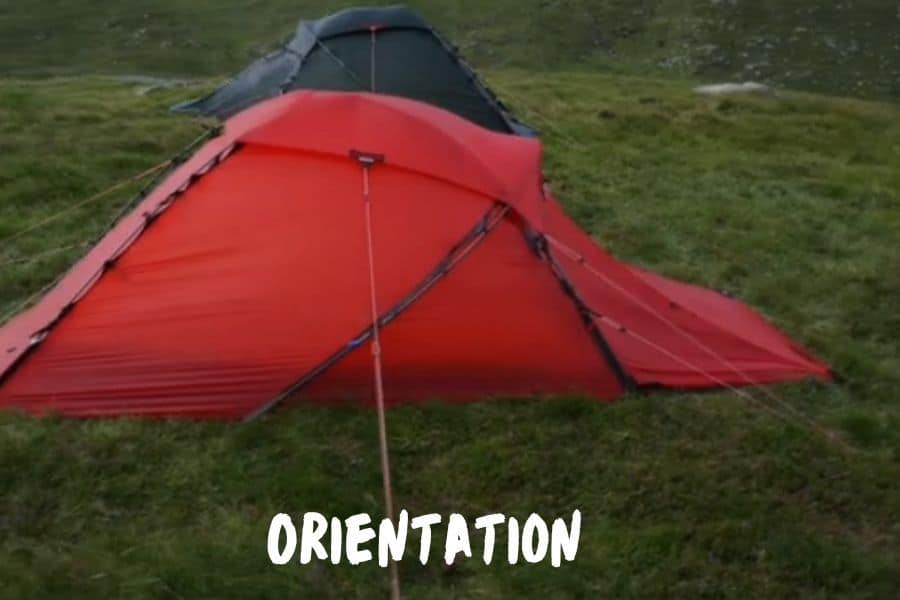
On their worst days, tents can turn into sails in the wind – and get blown away!
Even though most tents are designed to divert wind around their structures, it’s still possible for them to get caught up in especially high winds.
While it might seem silly, the best way to orient your tent successfully in high winds is to think of it as a sail.
If you set up your tent so the largest, flattest part is facing towards the wind, it will act like a sail. It will catch the wind and blow away!
Even if you stake your tent properly, ferocious winds can still strain stakes and guylines to the point of breaking. Orienting your tent properly lessens the chances of this happening.
If you orient your tent so that the wind primarily hits it on the side, the majority of the wind will divert around the sides of the tent.
Natural Windbreaks
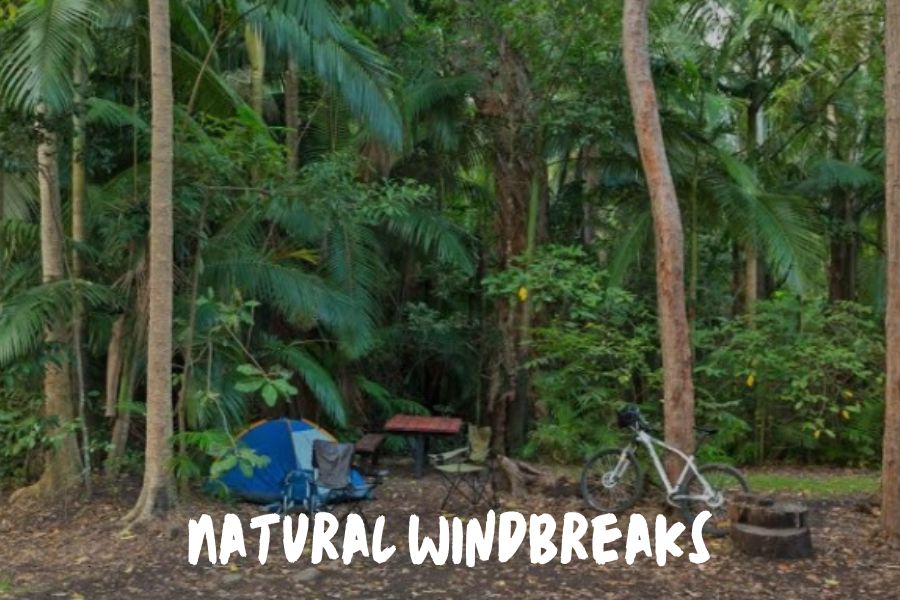
When you’re camping in windy conditions, some of the best wind barriers are already around you!
Using natural barriers like large rocks, sheltered hillsides, or forest areas can help make your camping area more protected.
When looking for natural barriers, it’s important to keep the weight of objects in mind.
Don’t set up camp next to sticks or small rocks that could be picked up in the wind and end up on your tent.
Additionally, even though camping in a forested area can be a great way to divert wind, it’s important to avoid placing your tent directly under any trees.
Old tree branches can easily get picked up by strong winds and get thrown onto your tent – or you!
Preparing For Camping In High Winds
Tent Type
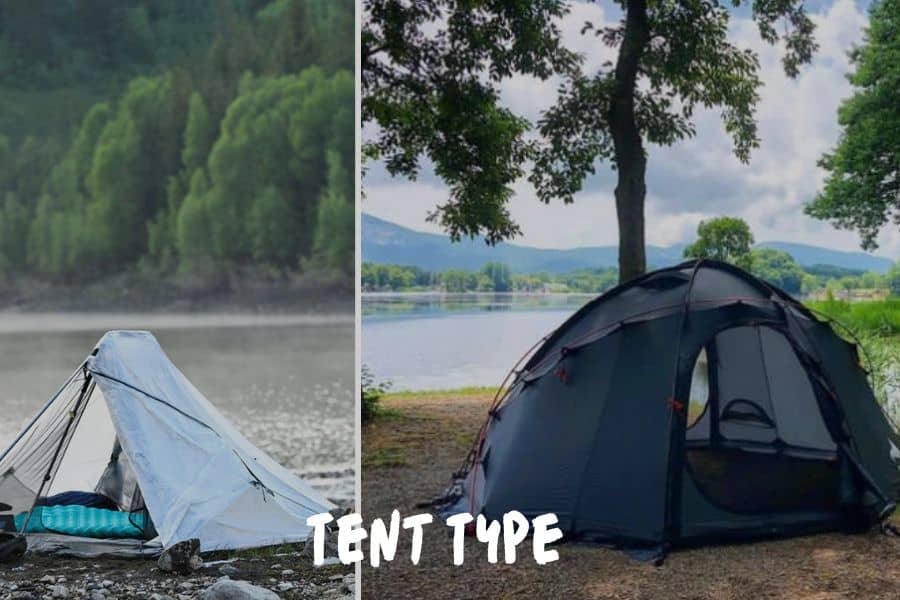
The first thing you can do when figuring out how to secure a tent in high winds is double-check that you have a good tent for windy weather.
There are many factors that make a tent good for withstanding wind. Height, weight, structure, and number of doors all play a hand in this.
Overall, dome-shaped tents are the best shape for windy weather. Their rounded profile catches less wind and provides more structural integrity.
But if the shape of your tent is elongated, then face its narrow end into the wind to reduce the impact of the wind.
MUST READ: How Much Wind Can A Tent Withstand?
Site Selection
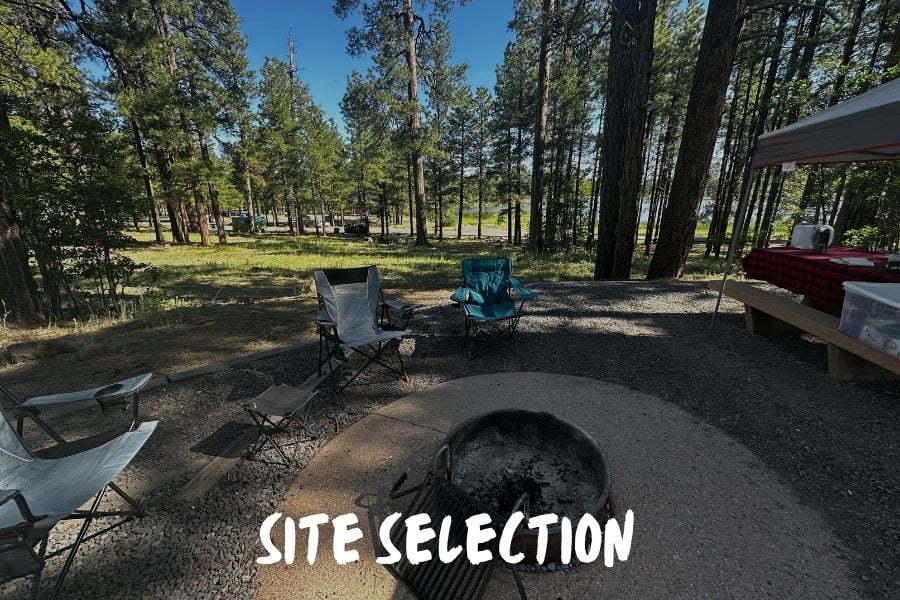
Choosing the right spot when you’re camping is always important, but even more so during high wind conditions.
You want a spot that provides natural windbreaks, has little debris to damage your tent, and has ground that is sturdy enough to stake into.
Avoid Wind Funnels & Gust Zones
Part of choosing the right site for your tent is finding and avoiding wind funnels and gust zones. These are areas where wind is concentrated due to the surrounding natural environment.
Examples include valleys, ravines, and canyons. Occasionally, the exposed sides of mountains can also take on a lot of wind and turn into a gust zone.
Once you’ve identified these areas, make sure that you stay away from them when you’re setting up camp.
Even though they may not be windy at the time you set up, the weather may change – leaving you stranded in a windstorm.
Monitor Weather Alerts & Wind Predictions
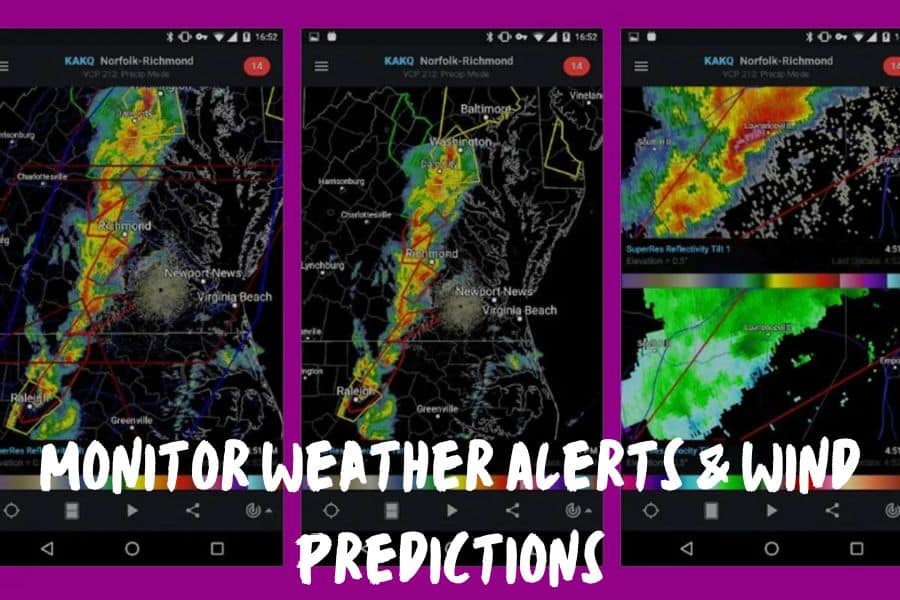
Before you head out on your campout, make sure you’re keeping an eye on the weather.
High winds are manageable to a point, but can turn dangerous fairly fast if you’re unprepared. It’s always best to know what you’re getting into before you’re there.
This way, you can either make sure you’re bringing the right additional gear with you, or (in extreme cases) canceling your trip altogether.
With a warning, you can bring a dome tent or extra stakes and guylines to make sure you’re fully secured.
You can use your favorite weather app to check on the weather before you head out.
We recommend WeatherBug or Weather Underground. Both apps give you a comprehensive view into incoming conditions.
Tips For Camping In High Winds
If you’re set on going on a camping trip regardless of the weather forecast, here are a few tips on camping in high winds.
Keep Your Gear Close
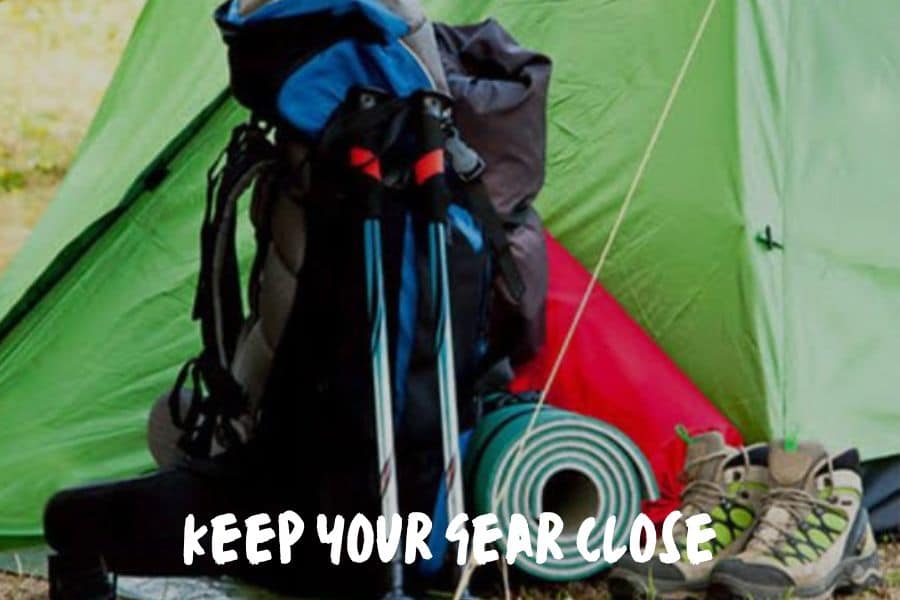
Before you even start, place your backpack and other heavy things somewhere you can easily reach them.
As you start pitching your tent, you can use these to help weigh it down so nothing ends up flying away.
Close The Door
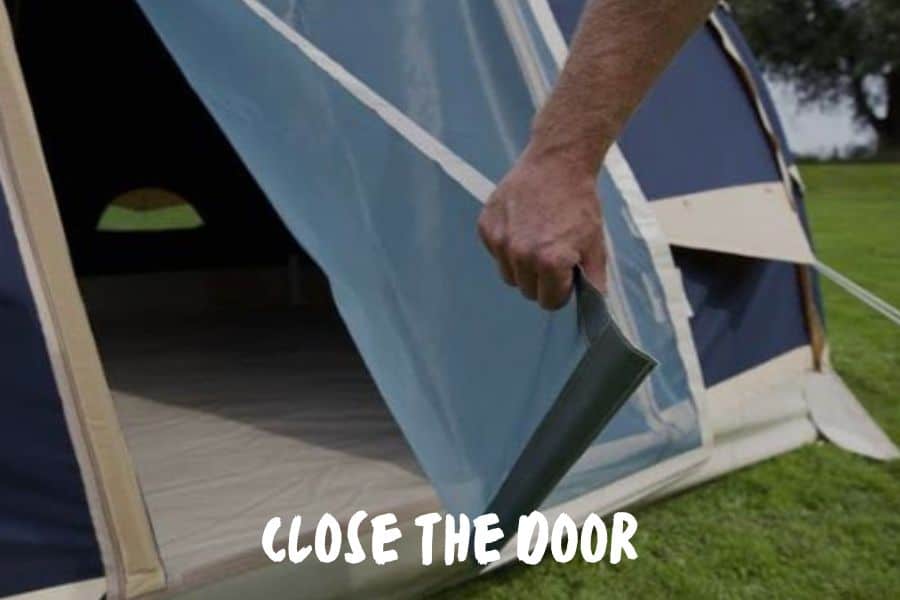
Never leave the door open.
If the wind is blowing in the direction facing the door, you risk turning your tent into a giant kite.
That’s not something you’d want, unless you want to see your things fly away like Dorothy’s house in The Wizard of Oz.
Learn Some Knots
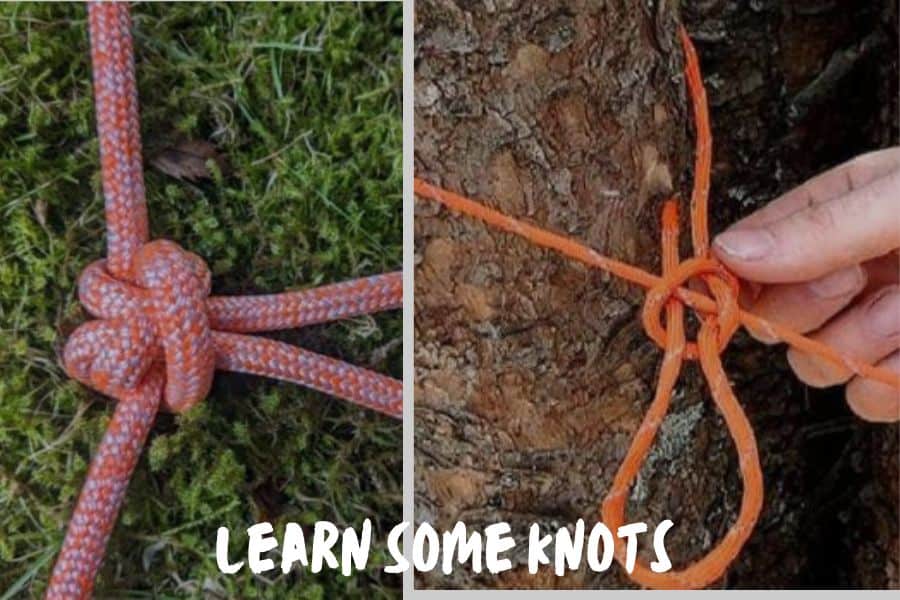
Knots can be a gamechanger when it comes to securing a tent. You need them to fasten guylines, which are essential during high wind.
And in case a rope snaps due to a fallen branch, you need to know how to properly tie two pieces together.
But you can’t go about it with just any knot. If your knot isn’t strong enough, it will unravel and leave your tent unprotected.
The other possibility is that you tie a knot so well, you can’t untie it. Ever.
Get A Tent Repair Kit
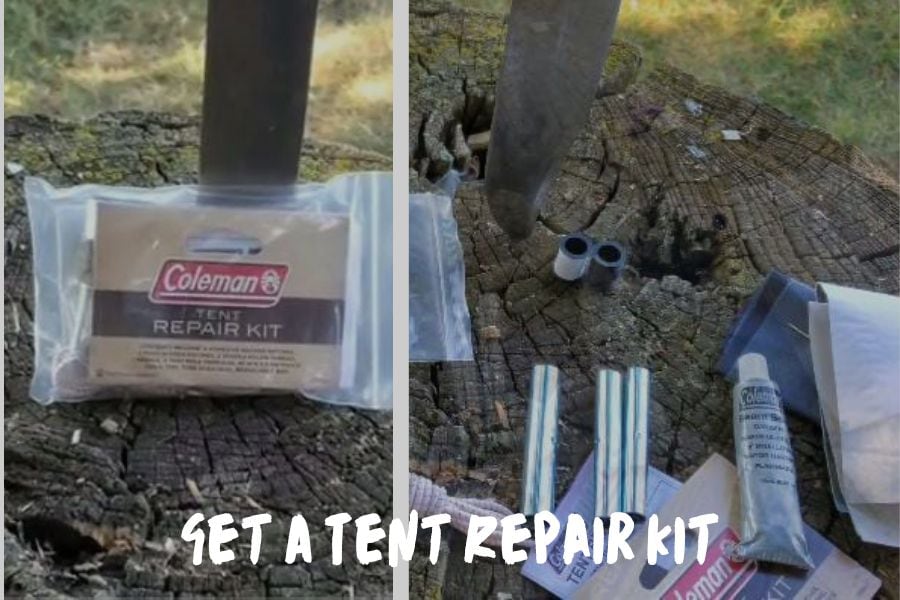
With high winds, you need to be ready for anything and everything.
If a small branch hits your tent, there’s a good chance it will cause a rip.
Have a tent repair kit close at-hand for such situations so that you can sew or patch it up before the damage increases.
Use Tarp Overlays For Extra Wind Resistance
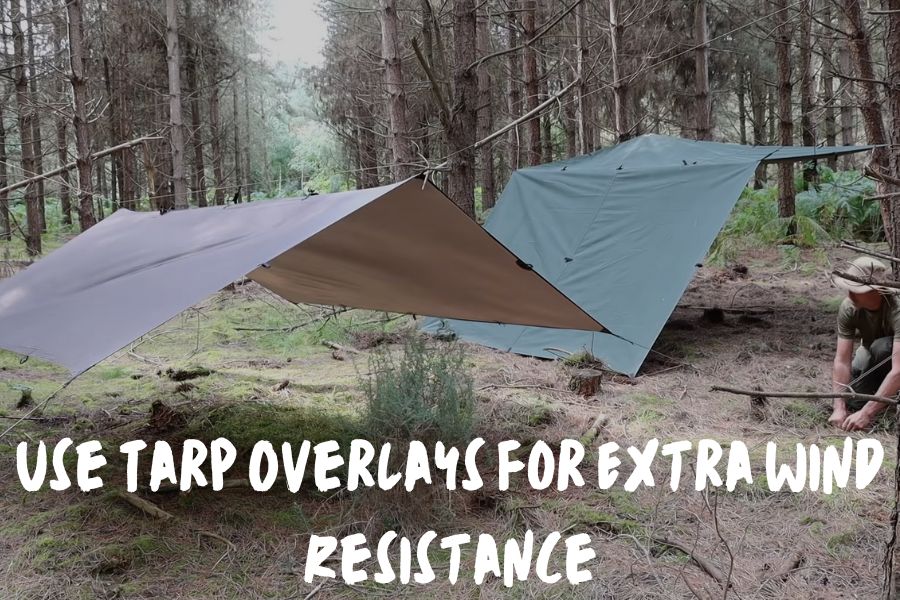
If the wind is especially bad, you can set up a tarp over your tent to create additional wind resistance.
The goal with the tarp is to create another pathway for the wind. Instead of hitting your tent directly, it will hit the tarp and be directed away (or around) the tent itself.
The tarp can also act as a barrier from rain or small objects that might be blown around in the wind.
You’ll want to set up the tarp as though you are using it on its own.
Even though it will be placed over the tent, it should not touch the tent itself, or attach to any of the tent parts.
If you’re in a wooded area, you can use the trees around you to secure the corners of the tarp. If you don’t have access to trees, you can use hiking poles or other natural objects around you.
When setting up your tarp, it’s important that you keep it as taut as possible. If you were to simply lay it over the tent, you won’t get any added wind resistance.
Know When To Pack Up & Seek Shelter
As you’re monitoring the wind, you might get to a point where you need to pack up or seek shelter.
If you’re getting this instinct to get up and go, it’s usually best to follow it. High winds can be dangerous, and it’s always better to be safe than sorry.
The Beaufort Scale is a scientific weather measurement system that assigns levels to wind speeds, while also providing descriptions for each level.
Level 6 and above are generally considered unsafe conditions for camping.
At wind speeds of 25–31 mph, Level 6 is characterized by strong wind, large branches moving and, if you have one, difficulty using an umbrella.
For added context, Level 7, which has wind speeds of 32–38 mph, is characterized by whole trees moving and difficulty walking outside due to wind levels.
If you’re experiencing any of the listed wind symptoms you should pack up camp, or cancel your trip.
If you’re on a long trek and unable to drive home, descending in altitude or finding natural barriers as shelter can help keep you safe throughout the windy period.
FAQs
What Is The Best Tent Design For High Winds?
The best tent design is going to be one that diverts wind around its sides, and doesn’t have much fabric for wind to get caught in.
Therefore, the best tent design to use will be a 2-person dome tent.
It’s best to use smaller tents in high wind conditions, even if it means bringing more tents for a larger group.
This is because smaller tents are usually lower to the ground when set up, and can therefore stand up more readily to strong winds.
How Can I Identify If My Tent Is Not Properly Secured?
The best way to see if your tent is secured is to check visually. A properly secured tent will have all corners, guylines, and rainflies secured by stakes.
All of these components play a role in keeping the structure of the tent intact and secure against incoming gusts.
If you see any of these pieces missing, or are noticing any part of the tent that is sagging uncharacteristically, it’s a hint that the tent may not be completely secure.
Is It Safe To Camp In Extreme Wind Conditions?
Unless you are an expert, it is not safe to camp in extreme wind conditions.
If winds reach a Beaufort scale level 6 or 7, you should pack up and try camping again on another day.
How Many Guylines Should I Use For Maximum Security?
This answer depends on your specific tent and its design. Usually 2-person tents will have anywhere from 2–10 guyline loops throughout the tent structure.
If you want extra security, use as many of these as you want, especially on the upper portions of the tent, to secure your tent to the ground.
Can I Use Rocks Or Other Heavy Objects To Secure My Tent?
No, I do not recommend using rocks or other heavy objects to secure the structure of your tent itself.
If you place rocks or other heavy objects on the tent structure during high winds, you risk causing tears or rips throughout the bottom and sides of your tent.
If you need extra stability and want to use rocks and heavy objects, use them to secure the guylines around the structure, rather than placing them on the tent structure itself.
What If My Tent Poles Break Due To The Wind?
If your tent poles break, the best approach will be to duct tape them as structurally secure as possible.
Poles are incredibly important to the structural stability of your tent, so you’ll want to MacGyver something fairly quickly.
If one of them breaks, you’ll want to fix it as much as possible on the trail, then replace it when you get home.
That’s All Folks!
Camping in high winds is quite a challenge. You need to have high-quality gear and always be on the lookout for things that can go wrong.
If you follow these simple tips for securing your tent, you can work around the weather nuisance and enjoy your camping trip like any other.
Happy windy camping!
MUST READ: How Much Wind Can A Tent Withstand?
More Camping Tips for Bad Weather:


